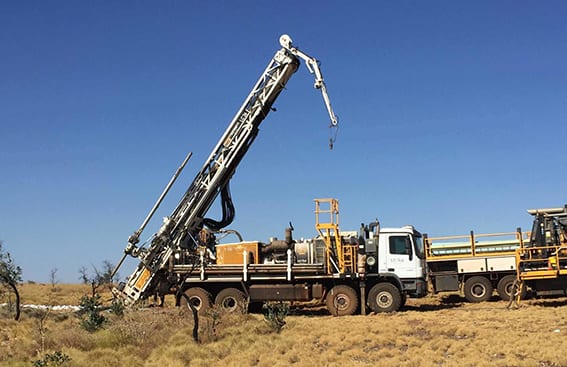The share price of De Grey Mining Limited (ASX: DEG) jumped 40% in early trade after the company released further results from its exciting Hemi Prospect discovery in Western Australia.
A 30m wide and high grade gold zone (>5g/t ) has now been defined at the Aquila Zone (Section A) to 130m depth at Hemi.
A second high grade zone (>2.5g/t) has been outlined at Brolga (Section B) to 50m depth, 640m to the east. Additional step out aircore drilling on a nominal 160m x 40-80m basis is continuing within the 2.5km long prospective corridor.
Ongoing RC and aircore drilling continue to define the sulphide alteration along strike, over increased widths and down dip on generally widespaced sections between 80 to160m apart.
Exploration Manager, Phil Tornatora, said DeGrey has received further positive RC drilling gold assays from the Brolga Zone (Section B) and the Aquila Zone (Section A and extensions), together with additional aircore results.
“Early drilling at Hemi has produced some of the best discovery intersections that I have seen,” Mr Tornatora said.
“Drilling to date, shows exceptionally wide, continuous and good grade gold mineralisation.
“Geological indications suggest that Hemi may be more of an intrusion related style of gold system rather than the more typical orogenic shear hosted style deposits of the Pilbara and other WA goldfields.
“We have three rigs on site advancing this exciting new discovery.”
Since recommencing drilling in January 2020, 13 RC holes and three RC precollars totalling 2784m and 115 aircore holes totalling 10,360m have been completed at Hemi.
Drilling is targeting along strike and down dip extensions of the sulphide rich alteration zones to outline the potential scale of the deposit prior to infill resource definition drilling.
Hemi is a new gold discovery under transported cover, with the first aircore drill results reported in mid-December 2019. Further encouraging high grade results were subsequently reported on 6 and 11 February 2020, with a significant increase in sulphide rich alteration zones released on February 26, 2020.
Mr Tornatora said maiden RC drilling recently commenced and is providing significant new information both along strike and at depth. Diamond drilling has also commenced targeting depth extensions and increased geological controls.
The gold mineralisation is intimately associated with extensive sulphide alteration (pyrite and arsenopyrite) and has recently been recognised as hosted in diorite to quartz diorite intrusion in both zones.
Mr Tornatora said the initial RC drilling results confirm strong gold mineralisation associated with extensive sulphide rich alteration.












